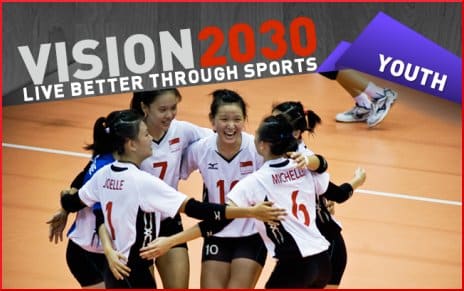
Yesterday, Childhood Obesity News looked at some of the programs implemented by the government of Singapore over the past few years to prevent childhood obesity. We also got a glimpse of the future plan slated to begin in the new year, a physical education curriculum that will enable students to be proficient in at least three sports upon graduation from secondary school.
But that’s a mere drop in the bucket compared to the Vision 2030 project. This enormous project, led jointly by the Singapore Sports Council and the Ministry of Culture, Community and Youth, was designed to answer the question: “How can sport best serve Singapore in the coming decades?” The administration gathered input from every conceivable source, as the literature makes clear:
We met with sports leaders, urban planners, teachers, volunteers, doctors, retirees and stay-at-home mums.
Social integrity is a primary value in Singapore, and sport is seen as a powerful force to unify this multiracial and multicultural society by fostering a sense of belonging. The aim is to imbue all the citizens of all ages and backgrounds with positive and deeply held values such as leadership, commitment, respect for teamwork, a winning spirit and most of all a shared love of the city-state that tries so hard to create a space for all members of society to optimize their lives. There is a belief that sport can improve the welfare of the disadvantaged, the disabled and the underprivileged. The feeling is that the values learned from participation in sports will carry over into every area of life, creating a more team-oriented workforce and education system, as well as a civil service that truly cares about serving the people.
Serving the Young
Vision 2030 has subdivisions concentrating on the various demographics, and the young are considered to be of prime importance because they are the leaders of and participants in the future. This part of the plan is being constructed by the Sports Pathways Committee in conjunction with the Ministry of Education, and includes a network of Super Sports Clubs and a Sports Facilities Master Plan. The usefulness of so much enthusiastic physical activity for curbing childhood obesity is not spelled out but is surely a major priority. This is where the work of the Singapore Sports Institute (SSI) comes into play. It concentrates on sports medicine and science in support of the already existing elite national athletic teams, but the concept is to expand into every societal niche. The Vision 2030 website lays it out:
By networking with other clinics, SSI will extend its impact to the benefit of all athletes — elite, competitive or recreational. SSI intends to extend its reach even further into the greater community through public tours, lectures, clinics, resources, attachments and networking sessions…. Increasingly, SSI will focus on expanding capabilities among sports medicine and sports science specialists at home, including sports psychology, physiology, nutrition & physiotherapy…. SSI will continue to review its best practices against international benchmarks.
The Super Sports Club seems to be intended as a catch-all opportunity for youth who don’t do well enough to make the team in school, for adults who missed their chance in school but still want to participate in sports for health and fellowship, and even for visitors who are temporarily stationed in Singapore for education or work. Here is the dream:
The Clubs will serve as community town centres — as places to socialise with friends and family. Additionally, the Super Sports Clubs have the potential to operationalise initiatives by the SportCares movement to reach out to families and individuals who may feel marginalised by society. With their roots deeply embedded in the community, the Super Sports Clubs will have the potential to become hubs for overall youth development as well.
In other words, the muscular Singapore government is nationalizing health in ways that President John F. Kennedy’s New Frontier fitness program (and Meredith Willson’s “Chicken Fat” anthem) could only dream of.
(to be continued…)
Your responses and feedback are welcome!
Source: “OHCHR Study on Children’s Right to Health,” OHCHR.org, 10/10/12
Source: “About Vision2030,” vision2030.sg
Source: “Youth,” vision2030.sg
Source: “Proposals,” vision2030.sg
Image by Vision 2030 Youth

 FAQs and Media Requests:
FAQs and Media Requests: 











